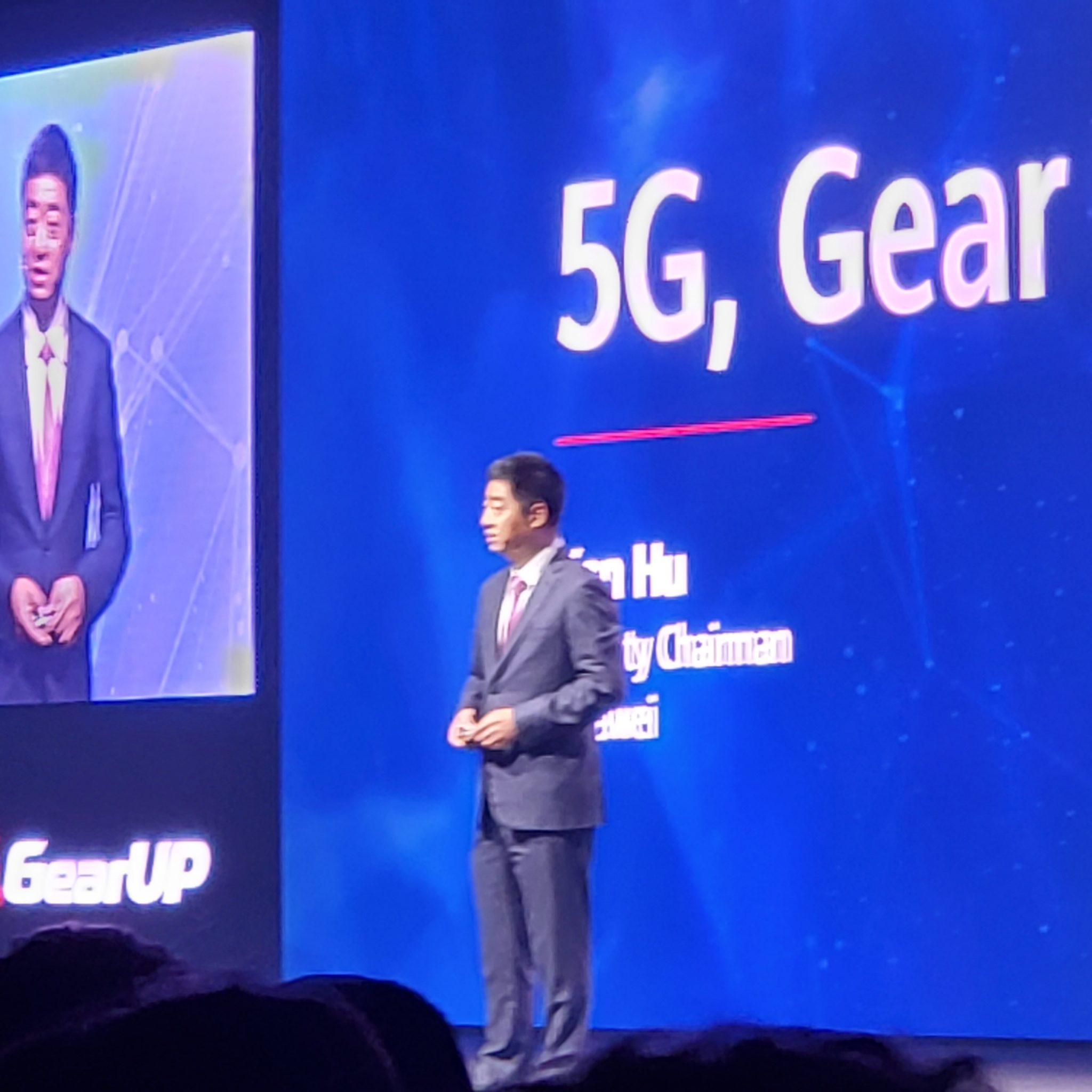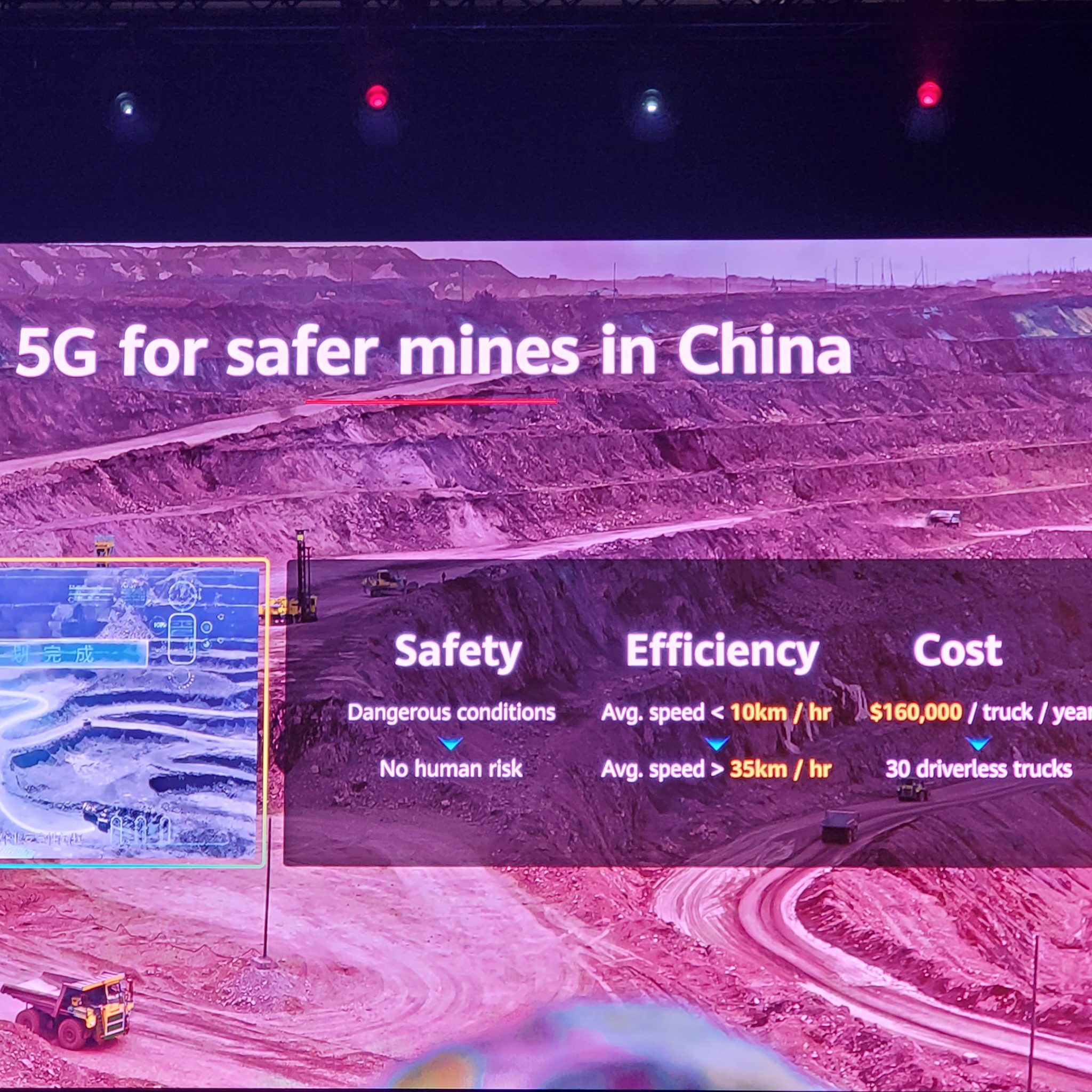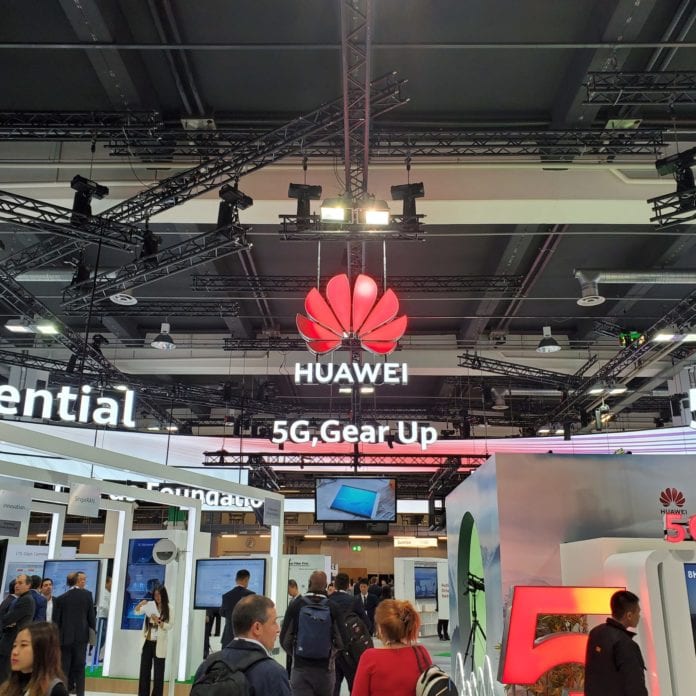Ken Hu of Huawei says 5G creating safety, efficiency in Chinese mines; driving new consumer experiences in South Korea
ZURICH–Successful 5G deployments is about more than consumers and enterprises; it requires buy-in and accommodation from governments and regulators as well, Huawei Deputy Chairman Ken Hu said in the opening keynote of the 10th Mobile Broadband Forum hosted this week in Switzerland.
As an aside, Hu pointed out that Switzerland “is the ideal place to host this year’s event,” as there’s already fairly widespread commercial 5G availability from carriers Swisscom and Sunrise, the later of which using end-to-end Huawei kit. The nation’s third carriers, Salt, plans to launch sometime by year-end. More on that here.
The general theme of Hu’s presentation, and the conference as a whole, was “Gearing up for 5G. From 4G to 5G, we have made incredible progress,” he said. “We, as an industry, we should be proud of that. But today, I’d like to talk about next steps. Where do we go from here and how can we make the most of 5G technology? For me, this is about a shift of mindset; not just for vendors and carriers, but also for regulators and governments. 5G is a revolutionary technology. We all need to think about it in a different way.”

Hu specifically discussed the need for flexible, less expensive access to spectrum; easier access to new and existing wireless infrastructure sites; and cross-sector collaboration to develop use and business cases.
On the spectrum piece, Hu said overly-expensive licensure will lead to industry stagnation as carriers struggle to allocate capex for network construction. In China, he said the government allowed carriers to pay in installments rather than up front. In Saudi Arabia, the government reduced costs and in return raised requirements for user experience and coverage. “This is a win-win for both sides,” he said.
When you consider the network densification needed to support consistent 5G experiences, particularly when millimeter wave frequencies are being used, carriers run into the same recurring set of problems: access to power, backhaul and sites. For site acquisition, Hu gave the example of the Sha
Now onto site resources. “Availability of sites always falls short of demand. Regulations can help…by providing more public infrastructure for sharing and providing guidance on site construction.”
In Shanghai, city government set standards for multi-function utility posts. By end of 2020, there will be this kind post along 500 kilometers of road. “That will help to provide another 30,000 extra sites. That’s 75% of existing sites we have today in the market.” In Germany, carriers working with regulators to identify public resources that can be used for 5G.” UK relaxing regulations, taller antennas for example.
“We can all learn from these practices.”
And there’s the notion of evolving 5G from a consumer service to the connectivity medium underpinning digital transformation for enterprises and industries. Hu gave the example of a Chinese mine where Huawei worked with China Mobile to set up a 5G network to support driverless mining vehicles.
When manned by workers, four drivers earning $40,000 per year are require d to operate one truck and can only safely operate the vehicle at around 10 kilometers per hour. When you take the humans out of the mix, there’s the obvious $160,000 per truck per year cost saving, but also no life safety risk and the ability to operate at up to 35 kilometers per hour, so a clear efficiency gain.
d to operate one truck and can only safely operate the vehicle at around 10 kilometers per hour. When you take the humans out of the mix, there’s the obvious $160,000 per truck per year cost saving, but also no life safety risk and the ability to operate at up to 35 kilometers per hour, so a clear efficiency gain.
But these type of industrial-facing use cases have to be developed in collaboration with partners as carriers don’t necessarily have the expertise to do this in a vacuum. “We still have challenges in terms of vertical industry knowledge,” Hu said. “We can solve these challenges through cross-sector cooperation.”

